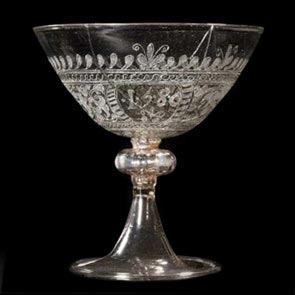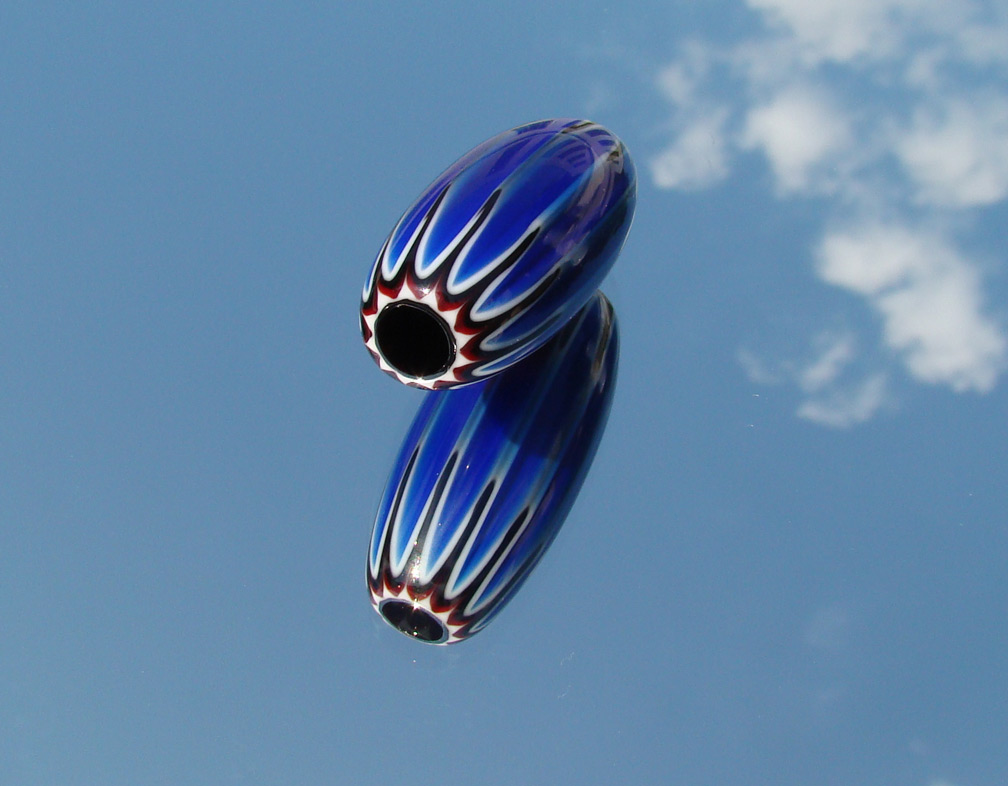| Re: Glass chemistry question | |||||
| Re: Glass chemistry question -- Rosanna | Post Reply | Edit | Forum | Where am I? | |
02/19/2019, 09:45:00
Hi Rosanna, Yes, iron is the most common contaminant in glass making materials and it contributes to the gray green you see in the edge of window glass. Coke bottle green is iron, but in a calculated added amount. Manganese makes purple in glass which is chromatically opposite to green so was added in minute amounts to "decolorize". clear glass when going for that crystal look. It is not added to glasses which are made to be colored unless as a colorant itself. Manganese in Clear glass is photochromatic and turns purple with prolonged exposure to ultraviolet light. The old purple bottles you see are this feature at work. About the time of the first world war Manganese became a war material so was abandoned for decolorization and selenium was substituted. It isn't photochromatic so the newer bottles don't change color over time in the sun.
It has long been my opinion that the chevron makers of old used waste glass for the first and third layers in their beads to bulk up the core of the cane with less expensive glass where it wouldn't show in the finished bead. This would explain the wide variety of core colors observed. Keep in mind that these beads were made for export to places that were primitive by European standards and much less care was taken in making them than in making the fabulous glass Venice was famous for in the salons of Europe at the time. Precision in construction, and color was not a prime consideration, production quantity was. Both the cobalt for the blue and the copper compounds for the red and the fluorine compounds for the white were expensive so using the waste green glass at the core of the cane made sense from an economic standpoint. Further in the 1500s the materials used in glass making were not nearly as refined as in modern times. So contaminants in the coloring materials could and did contribute to the color outcome. Cobalt is the strongest colorant in the glass chemistry world. As little as 1/4 of 1 percent will yield good color. Cobalt will swamp other colorants in a batch so the iron contaminant green would have no affect. Other colors require several percent for effect depending on the darkness of color desired. Some colorants produce different colors depending on furnace atmosphere and some yield different colors depending on amount added to the batch. Nickel is one of these. It can produce a glass light amber to amber/purple/ to dark gray. It is usually used in conjunction with other colorants. The dark blue you see in the old chevrons is not pure cobalt blue, it has nickel in it as well, making it what we used to call smoke blue in the glass shop. We added nickel to get that color. You see pure cobalt blue in the modern Chinese chevrons. I believe that the chevron makers of old were not looking for a precise effect in color and/ or pattern as witness the loose pattern construction of in the ancient chevrons and the color variety. The bright green ones were made to be green and the black ones were made to appear to be black (as Jamey has pointed out there is no true black glass) but I think that the blue varieties reflected the materials available at the moment and production necessities for meeting delivery requirements. Add to these considerations that in melting glass in pots the residual glass in a color pot will affect the next glass melted there.
Concurrent to these beads being made in Venice they were producing highly refined glass and objects from it like the goblet shown here. The beads were not their prime product, but production items made in great quantity for export so made with much less attention to perfection. The precise patterns you see in my beads is the result of extreme care in the making of the cane, something not possible in a high output production environment.
It has long been my opinion that the chevron makers of old used waste glass for the first and third layers in their beads to bulk up the core of the cane with less expensive glass where it wouldn't show in the finished bead. This would explain the wide variety of core colors observed. Keep in mind that these beads were made for export to places that were primitive by European standards and much less care was taken in making them than in making the fabulous glass Venice was famous for in the salons of Europe at the time. Precision in construction, and color was not a prime consideration, production quantity was. Both the cobalt for the blue and the copper compounds for the red and the fluorine compounds for the white were expensive so using the waste green glass at the core of the cane made sense from an economic standpoint. Further in the 1500s the materials used in glass making were not nearly as refined as in modern times. So contaminants in the coloring materials could and did contribute to the color outcome. Cobalt is the strongest colorant in the glass chemistry world. As little as 1/4 of 1 percent will yield good color. Cobalt will swamp other colorants in a batch so the iron contaminant green would have no affect. Other colors require several percent for effect depending on the darkness of color desired. Some colorants produce different colors depending on furnace atmosphere and some yield different colors depending on amount added to the batch. Nickel is one of these. It can produce a glass light amber to amber/purple/ to dark gray. It is usually used in conjunction with other colorants. The dark blue you see in the old chevrons is not pure cobalt blue, it has nickel in it as well, making it what we used to call smoke blue in the glass shop. We added nickel to get that color. You see pure cobalt blue in the modern Chinese chevrons. I believe that the chevron makers of old were not looking for a precise effect in color and/ or pattern as witness the loose pattern construction of in the ancient chevrons and the color variety. The bright green ones were made to be green and the black ones were made to appear to be black (as Jamey has pointed out there is no true black glass) but I think that the blue varieties reflected the materials available at the moment and production necessities for meeting delivery requirements. Add to these considerations that in melting glass in pots the residual glass in a color pot will affect the next glass melted there.
Concurrent to these beads being made in Venice they were producing highly refined glass and objects from it like the goblet shown here. The beads were not their prime product, but production items made in great quantity for export so made with much less attention to perfection. The precise patterns you see in my beads is the result of extreme care in the making of the cane, something not possible in a high output production environment.


All rights reserved by Bead Collector Network and its users
|